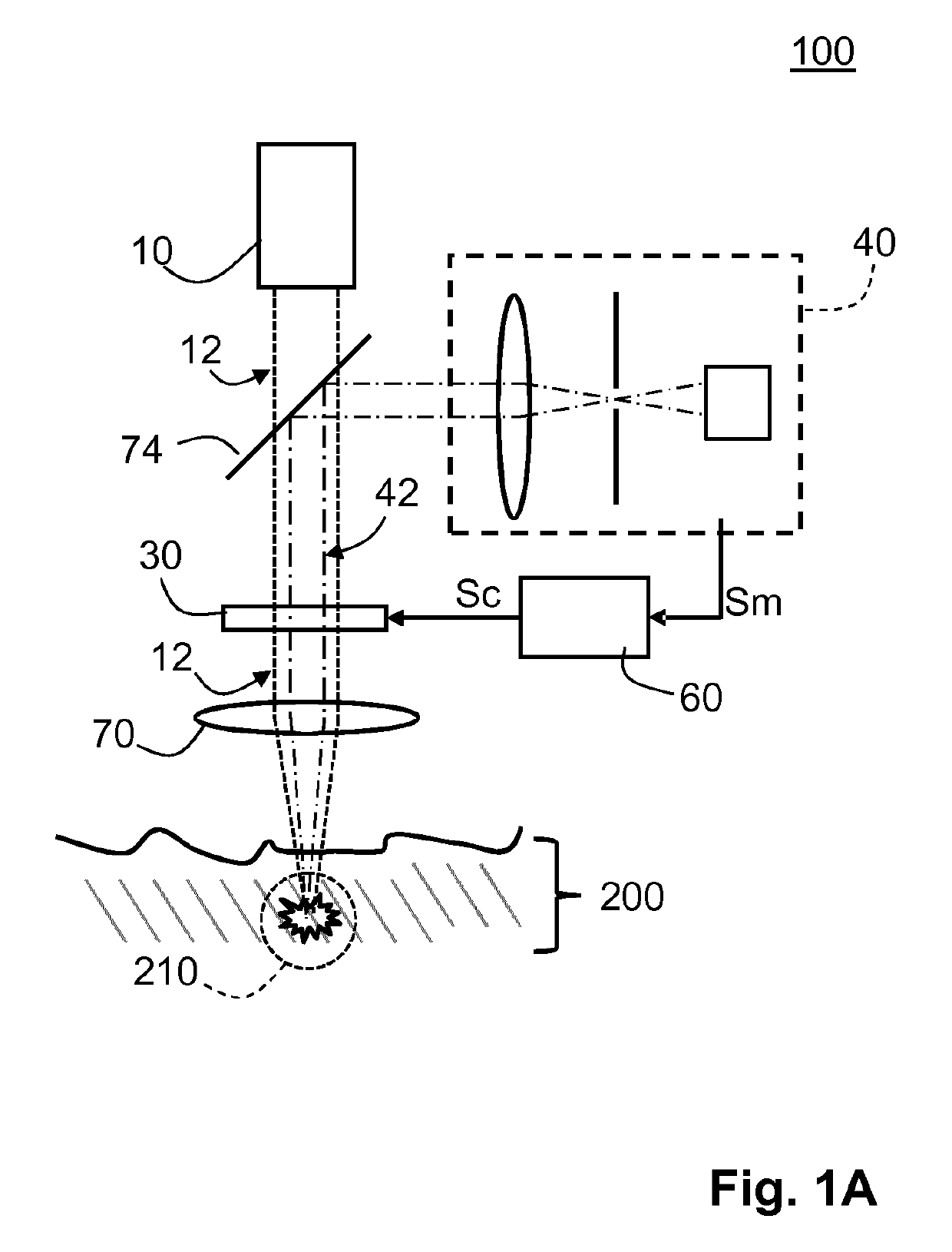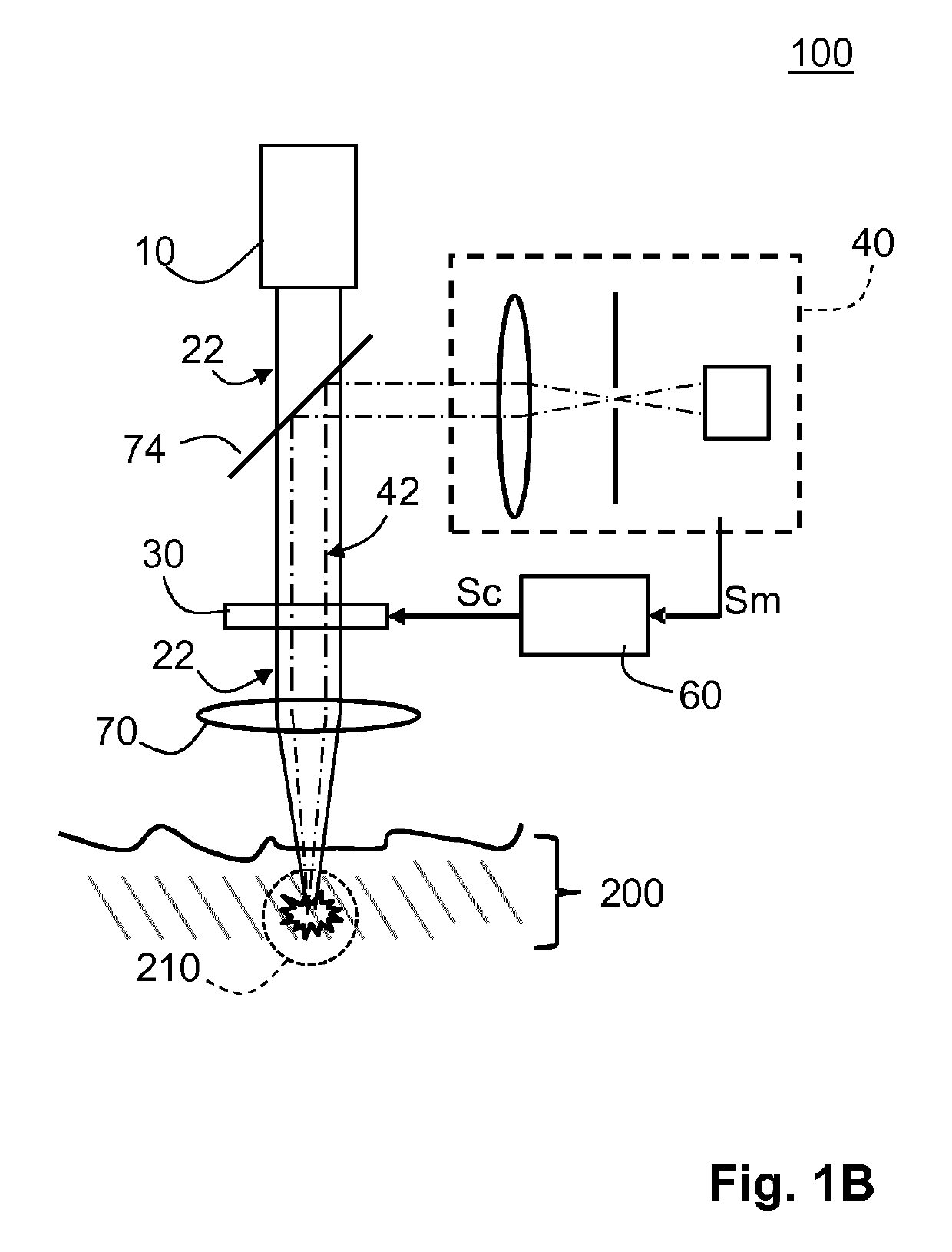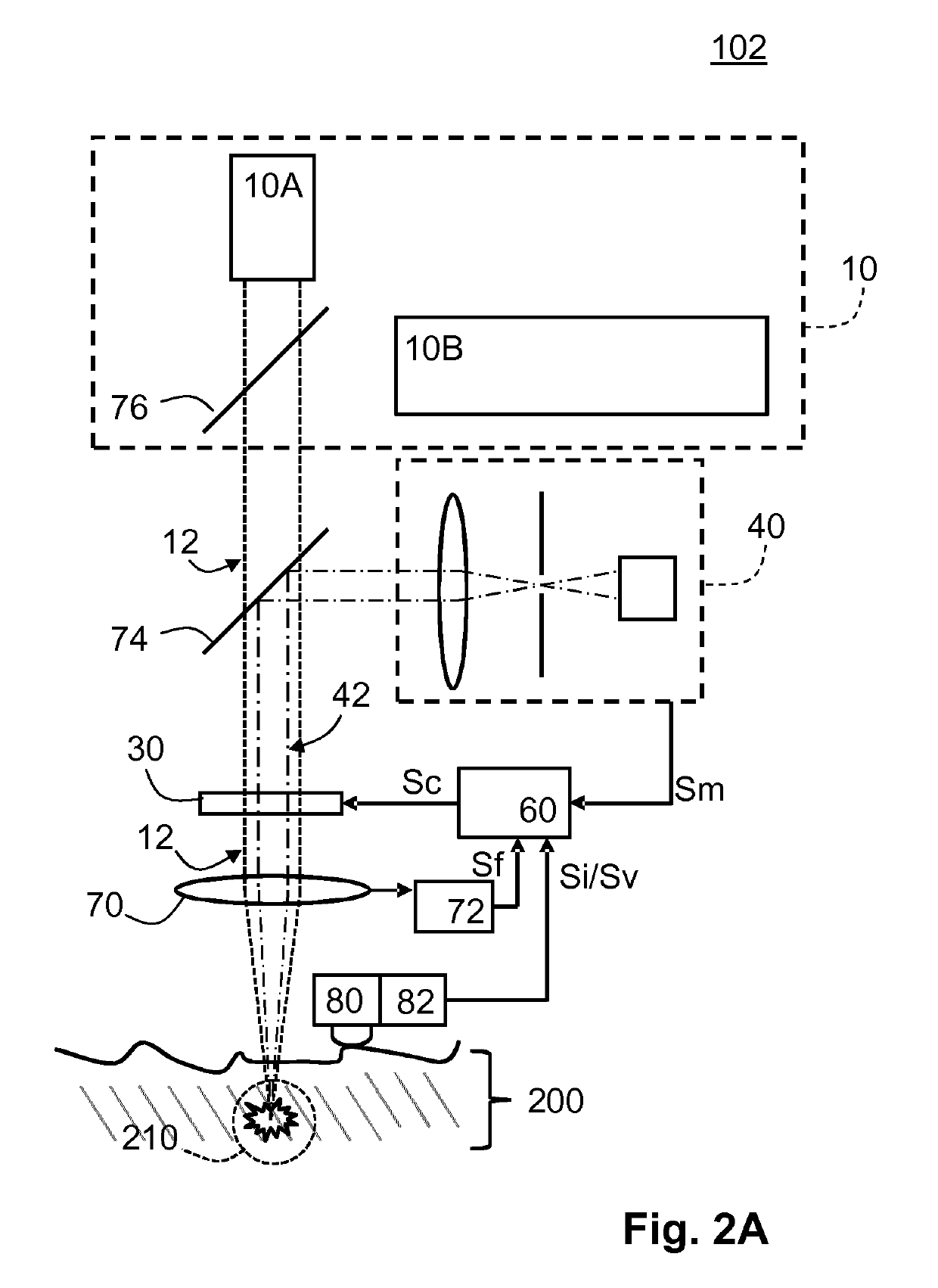Skin treatment device for multi-photon based skin treatment
a skin treatment and photon based technology, applied in the field of skin treatment using laser light, can solve the problem of challenging to achieve multi-photon ionization deep inside the skin
- Summary
- Abstract
- Description
- Claims
- Application Information
AI Technical Summary
Benefits of technology
Problems solved by technology
Method used
Image
Examples
first embodiment
[0039]FIGS. 1A and 1B diagrammatically show the skin treatment device 100 according to the invention. The skin treatment device 100 comprises a light source 10 constructed and configured for generating linearly polarized probe light 12 and linearly polarized treatment light 22 (see FIG. 1B). The skin treatment device 100 further comprises a polarization modulator 30 for controlling a polarization direction of the linearly polarized probe light 12 received from the light source 10, which light is emitted and focused using an optical system 70 toward the target position 210 inside the skin tissue 200. The skin treatment device 100 also comprises a polarization sensitive sensor 40 for sensing an intensity of the back-scattered probe light 42 from the target position 210. The polarization sensitive sensor 40 is configured for sensing a level of depolarization of the probe light 12 by sensing an intensity of back-scattered probe light 42 from the target position 210 in a predefined polar...
second embodiment
[0061]FIGS. 2A and 2B diagrammatically show the skin treatment device 102 according to the invention. In the embodiment shown in FIGS. 2A and 2B, the polarization modulator 30, the sensor 40, the controller 60 and the optical system 70 are identical to the embodiment shown in FIGS. 1A and 1B. However, in the embodiment shown in FIGS. 2A and 2B, the skin treatment device 102 comprises a light source 10 having a probe light emitter 10A and a separate treatment light emitter 10B. The probe light emitter 10A is configured for generating probe light 12 being linearly polarized light having an intensity level significantly below the intensity level required for generating the multi-photon ionization. The treatment light emitter 10B is configured for generating treatment light 22 being linearly polarized light having an intensity at or above the intensity level required for the multi-photon ionization process. As indicated before, the use of separate light emitters for, on the one hand, th...
PUM
 Login to View More
Login to View More Abstract
Description
Claims
Application Information
 Login to View More
Login to View More - R&D
- Intellectual Property
- Life Sciences
- Materials
- Tech Scout
- Unparalleled Data Quality
- Higher Quality Content
- 60% Fewer Hallucinations
Browse by: Latest US Patents, China's latest patents, Technical Efficacy Thesaurus, Application Domain, Technology Topic, Popular Technical Reports.
© 2025 PatSnap. All rights reserved.Legal|Privacy policy|Modern Slavery Act Transparency Statement|Sitemap|About US| Contact US: help@patsnap.com



